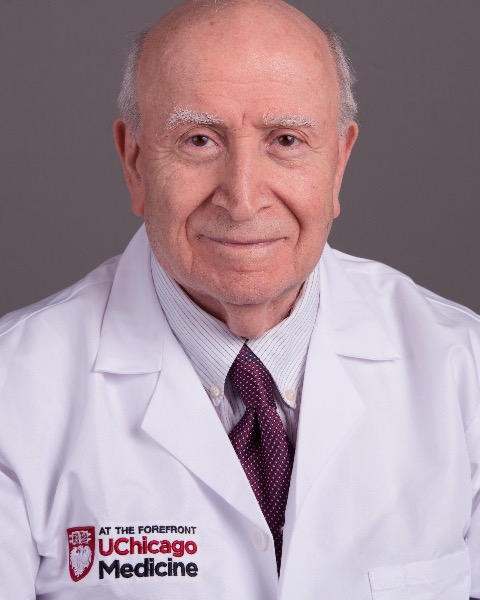Education
An Interactive Atlas of the Brain Structures Based on MRI

Javad Hekmatpanah
Professor of NeurosurgeryDepartment of Neurological Surgery
The University of ChicagoMedical center5841 S Maryland AveChicago Ill 60637
Chicago, IL, US
Presenting Author(s)
Introduction: The brain's anatomical structure is traditionally taught by prints in books that do not correlate with their actual in vivo size. This atlas is developed digitally based on the MRI scan of the human brain to facilitate teaching, learning, and self-assessment interactively for neuroscience students. And, to indicate topographic location, dimension, and accurate distance of the structures from the cortex and central axes, to correlate the exact location of lesions on MRIs with anatomy, and orientation during neurosurgical operations.
Methods: Approved by IRB, Brains’ MRIs of 10 neurologically healthy volunteers were obtained, for varied anatomic studies. Among them, the MRI scan of a 31-year-old male, having more information, was selected for the Atlas.
The anatomical structures were identified on Axial, Coronal, and Sagittal planes and their distances from the cortex and central axes lines for every 5-millimeter plane: Axes lines consisted of Anterior-posterior (AC-PC) commissures, mid-AC-PC vertical, and basal (al a horizontal line parallel to AC-PC; Basal line through Medalla and spinal cord junction.
Results: This Module is now hosted by the University of Chicago and uploaded on the Internet by the University Research Computing Center, free and without advertisement to be used for teaching, learning, and related scientific endeavors throughout the world.
Address: https://jhpmribrainatlas.rcc.uchicago.edu/
Conclusion : 1-The brain anatomical structures can be taught, learned, and self-assessed interactively
2-Distances of the brain structures from the cortex and central axes can be learned in milliliters topographically in axial, coronal, and sagittal planes for every 5-millimeter cut.
3- Brain lesions on brain MRIs can be correlated, defined, and reported more accurately.
4- A better topographic estimate of the location, especially for deeper brain lesions, can be done while operating.
Methods: Approved by IRB, Brains’ MRIs of 10 neurologically healthy volunteers were obtained, for varied anatomic studies. Among them, the MRI scan of a 31-year-old male, having more information, was selected for the Atlas.
The anatomical structures were identified on Axial, Coronal, and Sagittal planes and their distances from the cortex and central axes lines for every 5-millimeter plane: Axes lines consisted of Anterior-posterior (AC-PC) commissures, mid-AC-PC vertical, and basal (al a horizontal line parallel to AC-PC; Basal line through Medalla and spinal cord junction.
Results: This Module is now hosted by the University of Chicago and uploaded on the Internet by the University Research Computing Center, free and without advertisement to be used for teaching, learning, and related scientific endeavors throughout the world.
Address: https://jhpmribrainatlas.rcc.uchicago.edu/
Conclusion : 1-The brain anatomical structures can be taught, learned, and self-assessed interactively
2-Distances of the brain structures from the cortex and central axes can be learned in milliliters topographically in axial, coronal, and sagittal planes for every 5-millimeter cut.
3- Brain lesions on brain MRIs can be correlated, defined, and reported more accurately.
4- A better topographic estimate of the location, especially for deeper brain lesions, can be done while operating.

.jpg)